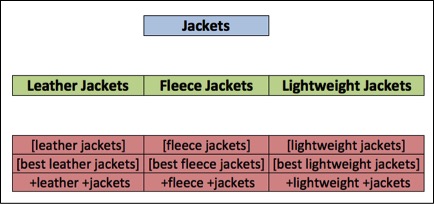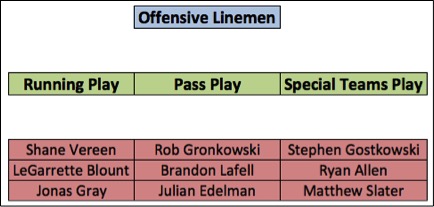Singing This Unsung Hero’s Praises – Proper Account Structure

With the Super Bowl matchup set, we’ll be talking football and PPC for January’s series week. Read how our authors compare the gridiron to the daily account management of PPC professionals. Matt starts us off this week by comparing how an unsung component of a football team compares to proper account structure.
Quarterbacks get all of the accolades for throwing touchdowns, but the guys that protect him are rarely mentioned. Offensive linemen are in the trenches, doing everything they can to hold off 300+ pound men from clobbering their quarterback. Without offensive linemen, the game of football would be very different. The same can be said about proper account structure.
Ultimately, all the searcher ever sees is the ad. All the account structuring done in the background comes to fruition through the ad copy. Ads, like quarterbacks, are judged based upon how good their stats are. A quarterback with a high completion percentage is akin to an ad that sees a great click-thru-rate (CTR). Both require a solid foundation to succeed while also receiving most of the credit.
Defining Account Structure
My definition of a proper account structure is one where individual campaigns are created around themes, which are further segmented into ad groups containing variations of a single keyword. The example below is rudimentary, but showcases the idea of a tight campaign.

All keywords in each ad group contain the core variation. For example, in the “Leather Jackets” ad group, all keywords contain some combination of “leather jackets.” Thus, our ad copy is going to contain the keyword we’re bidding on, making it relevant to the user search query.
With football, think of the offensive linemen as the campaign, the play type (pass, run, or special teams) the ad group, and the specific player the keyword. Using players from my favorite football team, the New England Patriots, let’s look at this structure.

If the Patriots want to run a well-executed running play, all sections need to be in sync. The progression might take this format.
- The ball is handed off to the running back where the play is to run to the left.
- The offensive linemen run to the left, protecting the running back.
- A first down is secured.
The running back will get the credit for gaining the first down, but the way the play was setup assured success.
Here are some other ways that proper account structure acts as your account’s offensive linemen.
Prevents Queries from Triggering the Wrong Ads
It can be frustrating when you’ve taken the time to research applicable keywords and write compelling ads, but the wrong ad shows. That’s why it’s so important to include negative keywords at the ad group level. Sometimes called keyword sculpting, by implementing ad group level negatives you are implicitly telling the search engine to show a specific ad.
Let’s take for example a campaign with these three ad groups.
- Hand Warmers
- Small Hand Warmers
- Large Hand Warmers
Each ad group has keyword specific copy. So if someone searchers for “large hand warmers” that person is going to see an ad speaking directly to “large hand warmers” which leads to the “large hand warmers” page. However, if I don’t add “large” as a negative keyword in the “hand warmers” ad group, it’s possible that a search for “large hand warmers” would trigger the more general ad in my “hand warmers” ad group. Both the ad copy and landing page would be less relevant to the query.
Makes Optimization Easier
Proper account setup does require more time in the short term as to have long-term success you can’t cut corners. Just like a makeshift offensive line, a poorly structured account is difficult to manage. I find that it’s much easier to make optimizations when the structure is solid. I’ll generally see better CTRs throughout the account since my campaigns are so tightly themed. I also add fewer negative keywords throughout the account for this same reason.
Fosters Account Expansion
Just as optimization is easier when the account setup is solid, so is expansion. Areas of high performance can look to be capitalized upon further. Ideas that may have been on the backburner can be tested. Whereas new ideas in a poorly structured account may be seen as lifesavers, in a well-oiled machine these ideas look to complement efforts.
Improves Client Relations
Due to the importance of their job, offensive linemen need to effectively communicate with each other. If they are misaligned, their quarterback and the rest of the offense will suffer. The same principle applies when explaining your work to clients.
If you think a poorly structured PPC account is difficult to manage, how will you explain progress (or lack thereof) to clients? Effective client management is an integral part of the job. You need to know how the account is structured and why to discuss strategy and performance. When you don’t feel confident about your account structure, it’s difficult for clients to feel anything but the same way.
Final Thoughts
Proper account structure is the unsung hero of PPC, just as offensive linemen are in football. Both entities allow their teammates to shine while being OK with staying in the background. As you create your PPC accounts, make sure to have a great structure in place that is built for better performance.



